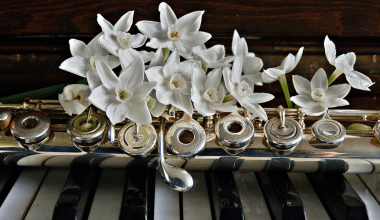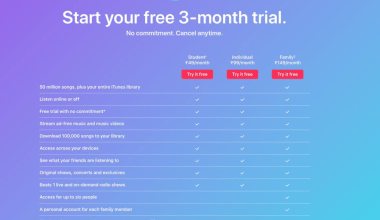In the digital age, the term playlist has become a part of everyday vocabulary. But what is playlist, and why is it so significant in music, video, and even personal productivity?
A playlist is a collection of songs, videos, or other media that are curated and organized for playback in a specific sequence. It’s a tool for personalization and convenience, allowing users to group media according to mood, theme, or occasion. From music streaming services like Spotify to video platforms like YouTube, playlists play a central role in how we consume content.
Understanding the Concept of a Playlist
At its core, a playlist is a digital version of a mixtape. It is a collection of media items arranged for sequential or shuffled playback. While playlists originated in the music world, they have expanded to include podcasts, videos, and even custom lists for workouts, meditation, or learning.
Key Characteristics of a Playlist:
- Personalization: Playlists reflect individual preferences.
- Accessibility: They make it easy to access your favorite media in one place.
- Variety: Playlists can mix genres, artists, and styles.
- Purpose-Driven: They are often created for specific occasions or moods.
The Evolution of Playlists
The idea of playlists isn’t new. Before the digital era, people created mixtapes on cassettes or burned CDs to share their favorite tracks. The introduction of MP3 players and streaming platforms revolutionized playlists, making them more accessible and dynamic.
Key Milestones in Playlist Evolution:
- 2001: iTunes introduces the concept of digital playlists.
- 2008: Spotify launches, popularizing curated playlists.
- 2015 and Beyond: Algorithm-driven playlists like Spotify’s Discover Weekly gain traction.
Types of Playlists
There are several types of playlists, each catering to different needs and preferences:
1. Mood-Based Playlists
Playlists created to match a specific mood, such as:
- Relaxation
- Motivation
- Party vibes
2. Thematic Playlists
Curated around a central theme, like holiday music, love songs, or nostalgic hits.
3. Event-Specific Playlists
Designed for weddings, workouts, road trips, or study sessions.
4. Algorithm-Generated Playlists
Platforms like Spotify and YouTube use algorithms to create playlists based on user preferences. Examples include Discover Weekly and Release Radar.
5. Collaborative Playlists
Playlists that allow multiple users to contribute, making them perfect for group events or shared interests.
Why Are Playlists Important?
Understanding what is playlist involves appreciating its role in enhancing user experience. Here’s why playlists matter:
- Convenience: Organizing media in playlists saves time.
- Discovery: Playlists help discover new songs, artists, or genres.
- Engagement: They keep users engaged with platforms like Spotify, YouTube, and Apple Music.
- Emotional Connection: Playlists can evoke memories and emotions.
- Marketing Tool: For artists and brands, playlists are a way to reach targeted audiences.
How to Create a Playlist
Creating a playlist is simple but requires some thought to make it meaningful and enjoyable.
Step 1: Define the Purpose
Decide the purpose of your playlist. Is it for relaxing, studying, or celebrating?
Step 2: Choose a Platform
Select a platform that suits your needs, such as Spotify, Apple Music, or YouTube.
Step 3: Add Content
Search for songs, videos, or podcasts that align with your theme or mood.
Step 4: Organize
Arrange the order of tracks to create a seamless flow or enable shuffle mode for variety.
Many platforms allow you to share playlists with friends or make them public for others to enjoy.
Platforms That Popularize Playlists
Several platforms have made playlists a central feature of their offerings:
1. Spotify
Spotify is synonymous with playlists. From user-created lists to algorithm-driven ones like Daily Mix, Spotify offers unparalleled variety.
2. YouTube
YouTube playlists combine videos, making them ideal for tutorials, series, or music videos.
3. Apple Music
Apple Music provides curated playlists and personalized recommendations.
4. Amazon Music
Amazon Music offers high-quality playlists, including HD and Ultra HD audio.
The Role of Playlists in Music Streaming
In the music industry, playlists have transformed how artists gain exposure and how listeners discover music. Platforms use data analytics to understand user preferences, creating highly tailored playlists.
Benefits for Artists:
- Increased visibility through playlist placements.
- Opportunities to reach niche audiences.
Benefits for Listeners:
- Discovering new music effortlessly.
- Access to curated content based on mood or activity.
Future of Playlists
The concept of playlists will continue to evolve with technology. Here’s what the future might hold:
- AI-Driven Playlists: Smarter algorithms for even more personalized recommendations.
- Voice Integration: Voice assistants like Alexa and Siri creating playlists on demand.
- Cross-Platform Playlists: Seamless syncing across multiple devices and services.
Conclusion
So, what is playlist? It’s more than just a collection of songs or videos. A playlist is a reflection of personal taste, a tool for discovery, and a way to enhance everyday experiences.
Whether you’re curating tracks for a party, exploring new genres, or simply organizing your favorite media, playlists offer endless possibilities. Embrace the power of playlists and elevate your listening or viewing journey.
Related Articles:
For further reading, explore these related articles:
- Step-by-Step Guide on How to Create a Playlist in a YouTube Channel
- How Many Songs Are on Spotify? A Comprehensive Exploration
For additional resources on music marketing and distribution, visit Deliver My Tune.





